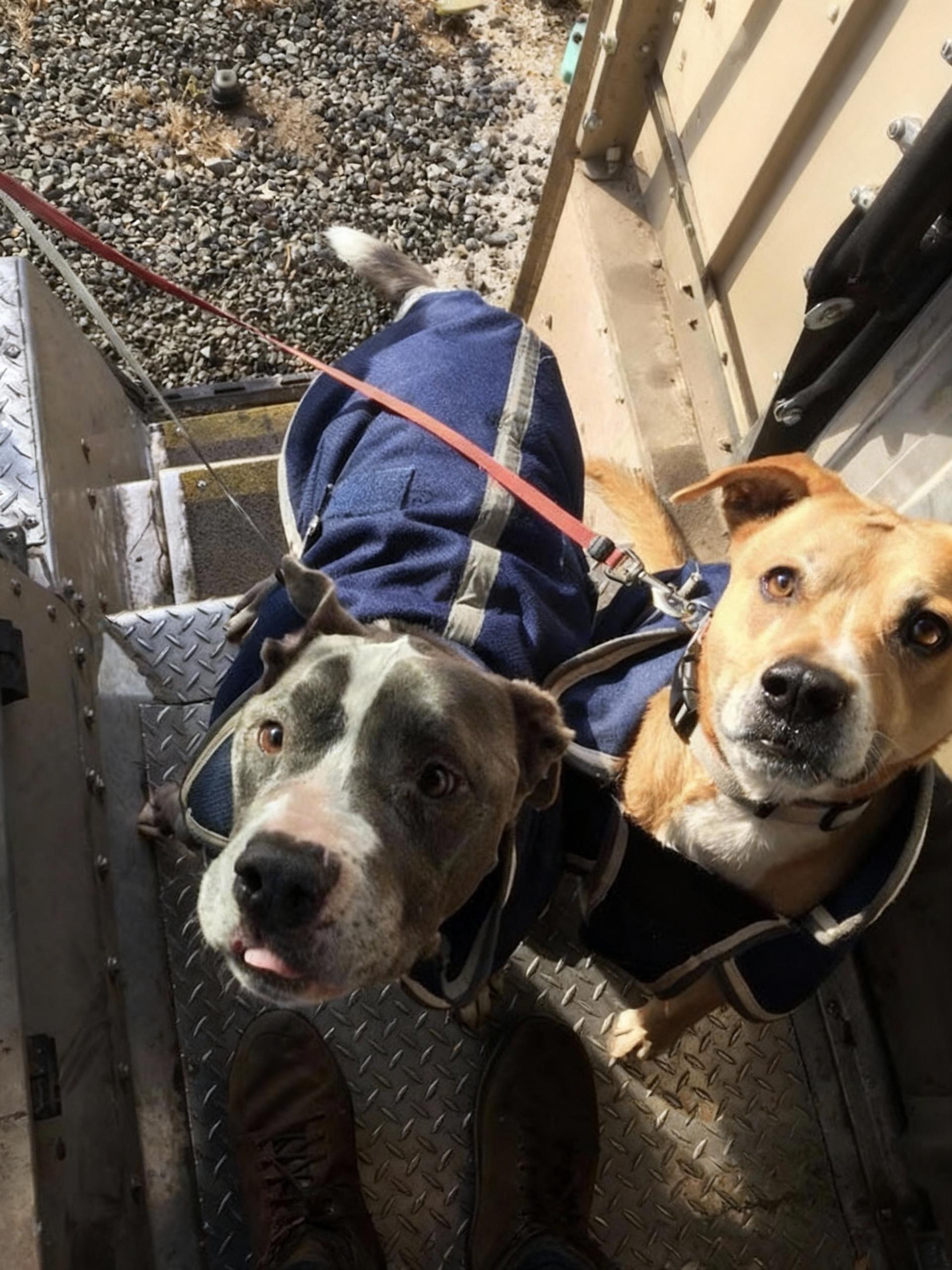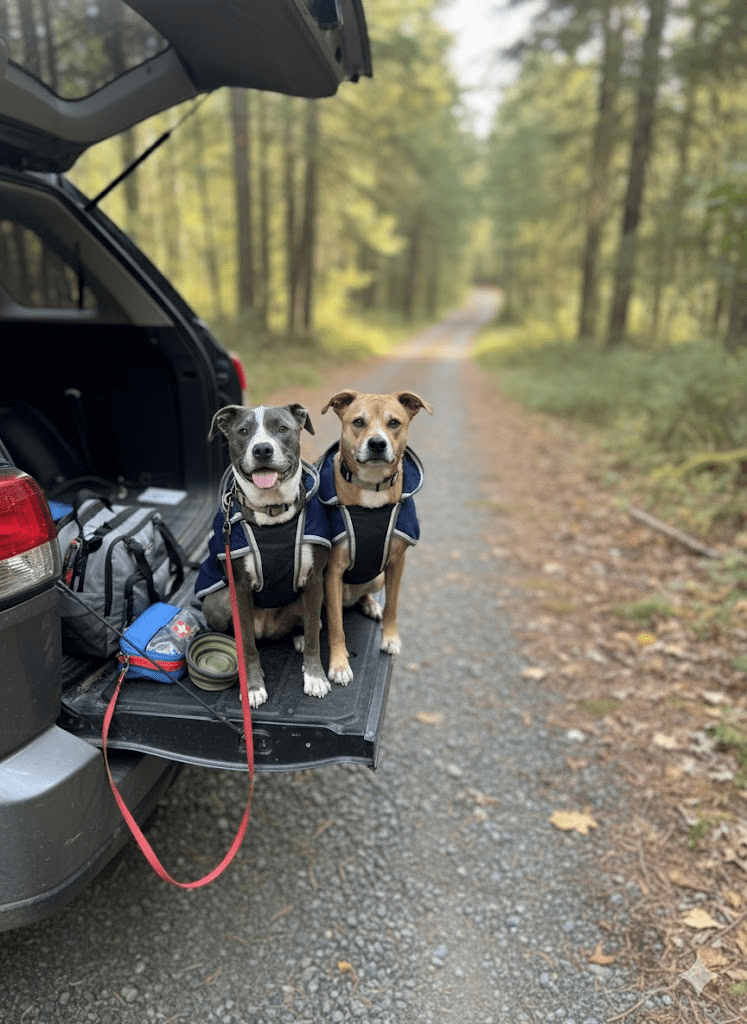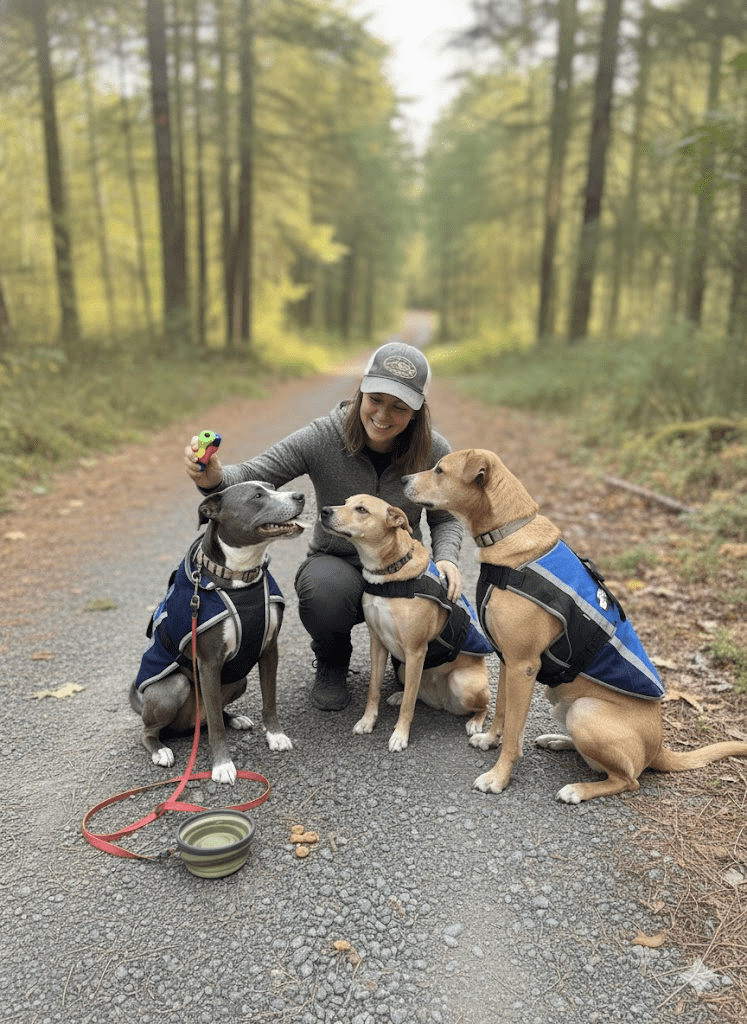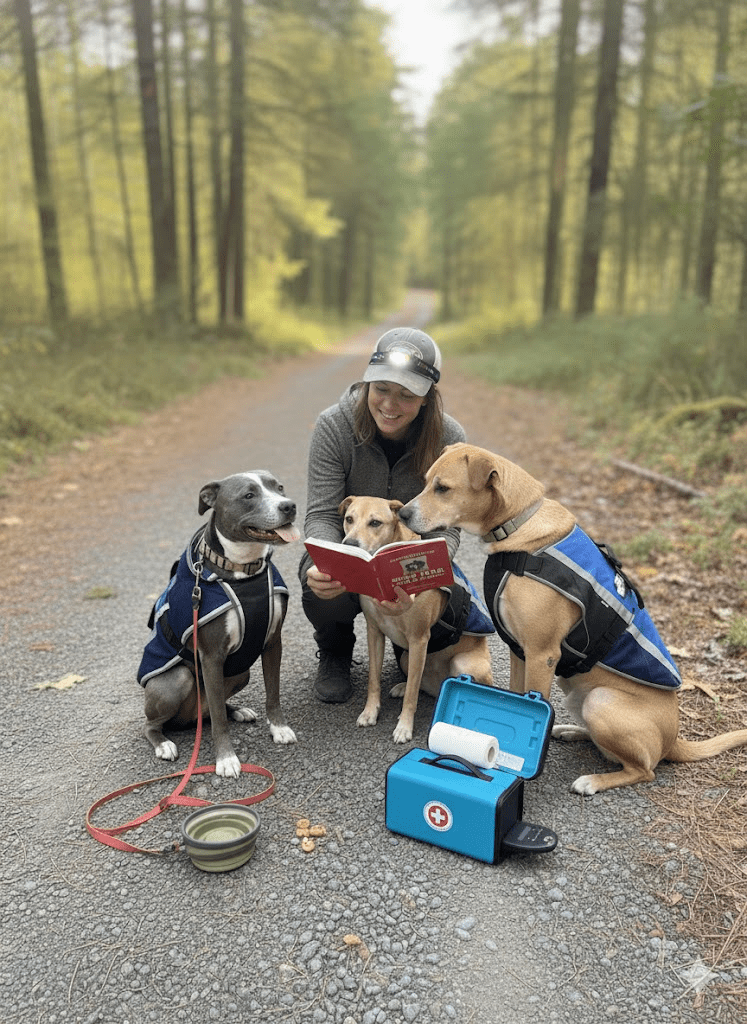As responsible pet owners, we strive to provide our furry friends with the best possible care, ensuring their health, happiness, and safety in all situations. This dedication extends beyond daily walks and regular meals; it encompasses preparing them for various adventures, from a trip to the local park to a cross-country journey. Just as we pack our bags and plan our routes, our canine companions also require thoughtful preparation to make every outing a positive and stress-free experience. This comprehensive guide will delve into the essential aspects of getting your dogs adventure-ready, covering everything from health checks and vaccinations to appropriate gear, training, and emergency preparedness. By understanding and implementing these crucial steps, you can confidently embark on new experiences with your beloved pets, knowing they are well-equipped, comfortable, and eager to explore the world alongside you. The image above beautifully captures two dogs, geared up in what appears to be protective vests, standing at the threshold of an adventure. Their bright, inquisitive eyes and ready stances perfectly embody the spirit of well-prepared companions, ready to embrace whatever lies ahead. This scene serves as an excellent reminder of the joy and confidence that comes with having your dogs properly outfitted and ready for the journey.

First and foremost, a thorough health check is paramount before embarking on any significant adventure. A visit to your veterinarian will ensure your dog is in optimal physical condition and free from any underlying health issues that could be exacerbated by travel or strenuous activity. This check-up should include a physical examination, dental assessment, and a discussion about any existing medical conditions. Vaccinations are another critical component of health preparedness. Depending on your destination and the activities you plan, your veterinarian might recommend specific vaccines to protect against diseases prevalent in those areas. For instance, if you’re planning a hiking trip in a wooded area, your vet might suggest a Lyme disease vaccine. Furthermore, ensuring your dog is up-to-date on parasite prevention, including flea, tick, and heartworm medications, is crucial. These parasites can not only cause discomfort but also transmit serious diseases. Microchipping your dog is also a wise precaution. In the unfortunate event that your dog gets lost during an adventure, a microchip significantly increases the chances of a safe reunion. It’s a small, one-time procedure that offers immense peace of mind. Keeping a copy of your dog’s vaccination records and any necessary prescriptions easily accessible, both physically and digitally, is also highly recommended. This information can be vital in an emergency or if you need to visit an unfamiliar vet.

Next, let’s consider the essential gear for your dog’s adventures. Just like humans, dogs need appropriate attire and equipment to stay comfortable and safe. The protective vests seen in the initial image are an excellent example of functional gear. Depending on the climate and terrain, your dog might benefit from a warm coat in colder weather or a cooling vest in hotter climates. Paw protection, such as booties, can safeguard against rough terrain, hot pavements, or icy conditions. A sturdy, well-fitting harness is preferable to a collar for leash attachment, especially for active dogs, as it distributes pressure more evenly and reduces the risk of neck injury. Always choose a leash that is durable and appropriate for your dog’s size and strength. For longer excursions, a portable water bowl and sufficient fresh water are absolute necessities to prevent dehydration. Pack enough of your dog’s regular food to avoid dietary upset, and consider bringing some high-value treats for training or motivation. A comfortable, easy-to-clean bed or mat can provide a familiar and secure spot for your dog to rest, especially in new environments. Don’t forget poop bags – responsible pet ownership includes cleaning up after your dog, no matter where your adventures take you. Lastly, a first-aid kit specifically designed for dogs is an invaluable item. It should include essentials like antiseptic wipes, bandages, tweezers for tick removal, and any prescribed medications your dog might need.

Training plays a pivotal role in ensuring your dog’s safety and enjoyment during adventures. Basic obedience commands such as “sit,” “stay,” “come,” and “leave it” are fundamental and can be life-saving in unpredictable situations. Practicing these commands in various environments, including distracting ones, will strengthen your dog’s responsiveness. Leash manners are equally important; a dog that pulls excessively can make walks unenjoyable and even dangerous for both of you. Positive reinforcement techniques are highly effective in teaching loose-leash walking. If your adventures involve off-leash opportunities in designated areas, a reliable recall command is absolutely essential. This means your dog should come back to you immediately when called, regardless of distractions. Consider enrolling in advanced obedience classes or specialized training for activities like hiking or scent work, depending on your interests. Early socialization is also key, exposing your puppy to various sights, sounds, people, and other dogs in a controlled and positive manner. This helps them develop into well-adjusted adults who are less likely to be fearful or aggressive in new situations. Consistent training not only builds your dog’s confidence but also strengthens the bond between you, making every adventure a more harmonious experience.

Preparing for the unexpected is a crucial aspect of adventure planning. Even with the best intentions, unforeseen circumstances can arise. Having an emergency plan in place can make all the difference. This includes knowing the location of emergency veterinary clinics along your travel route or near your destination. Store their contact information, including after-hours numbers, in your phone and in your dog’s emergency kit. It’s also wise to research any potential hazards specific to your chosen adventure location, such as venomous snakes, poisonous plants, or strong currents if you’re near water. Understanding these risks allows you to take preventative measures. For longer trips or remote areas, consider investing in pet insurance, which can help cover unexpected veterinary costs. Familiarize yourself with basic canine first aid techniques, such as how to administer CPR or treat minor injuries. There are many online resources and courses available that teach these vital skills. Finally, ensure your dog always wears identification tags with your current contact information. While a microchip is excellent, a visible tag offers immediate identification. By thinking ahead and preparing for potential emergencies, you can mitigate risks and ensure a safer, more enjoyable experience for both you and your adventurous dog.

Embarking on adventures with your canine companions is one of the most rewarding aspects of pet ownership. The shared experiences, the joy of exploration, and the strengthening of your bond create memories that last a lifetime. However, these experiences are made even better when you are thoroughly prepared. From ensuring your dog’s health and up-to-date vaccinations to equipping them with appropriate gear, investing in consistent training, and having a robust emergency plan, every step contributes to a safer, happier, and more fulfilling adventure. The image that inspired this article, with its two eager, well-outfitted dogs, perfectly encapsulates the spirit of readiness and enthusiasm for the journey ahead. By following these guidelines, you can ensure that every paw print your dog leaves on their adventures is a confident and joyful one, making every outing a tail-wagging success. Remember, a prepared pet owner is a responsible pet owner, and a well-prepared dog is a happy and healthy adventurer.







